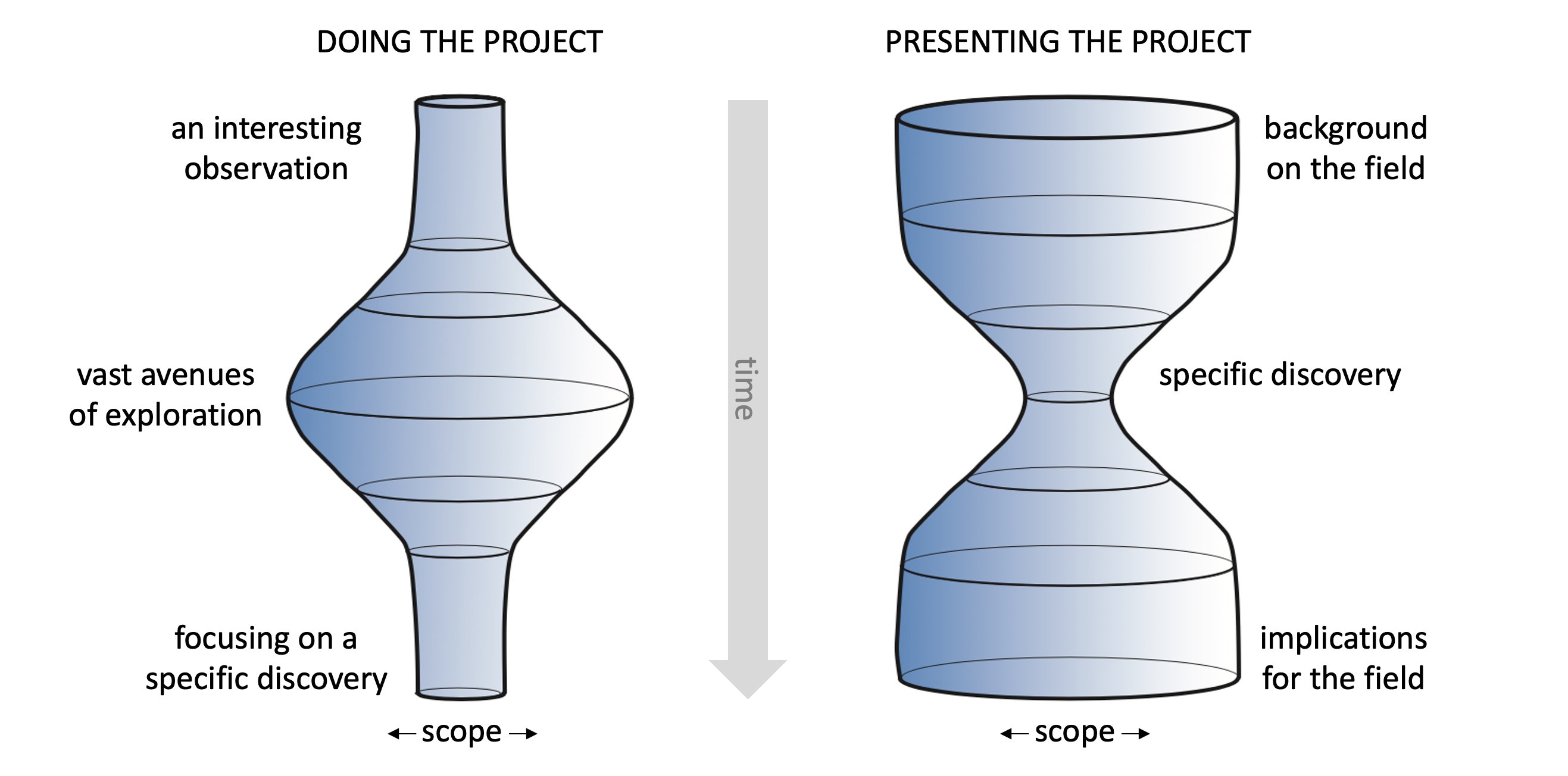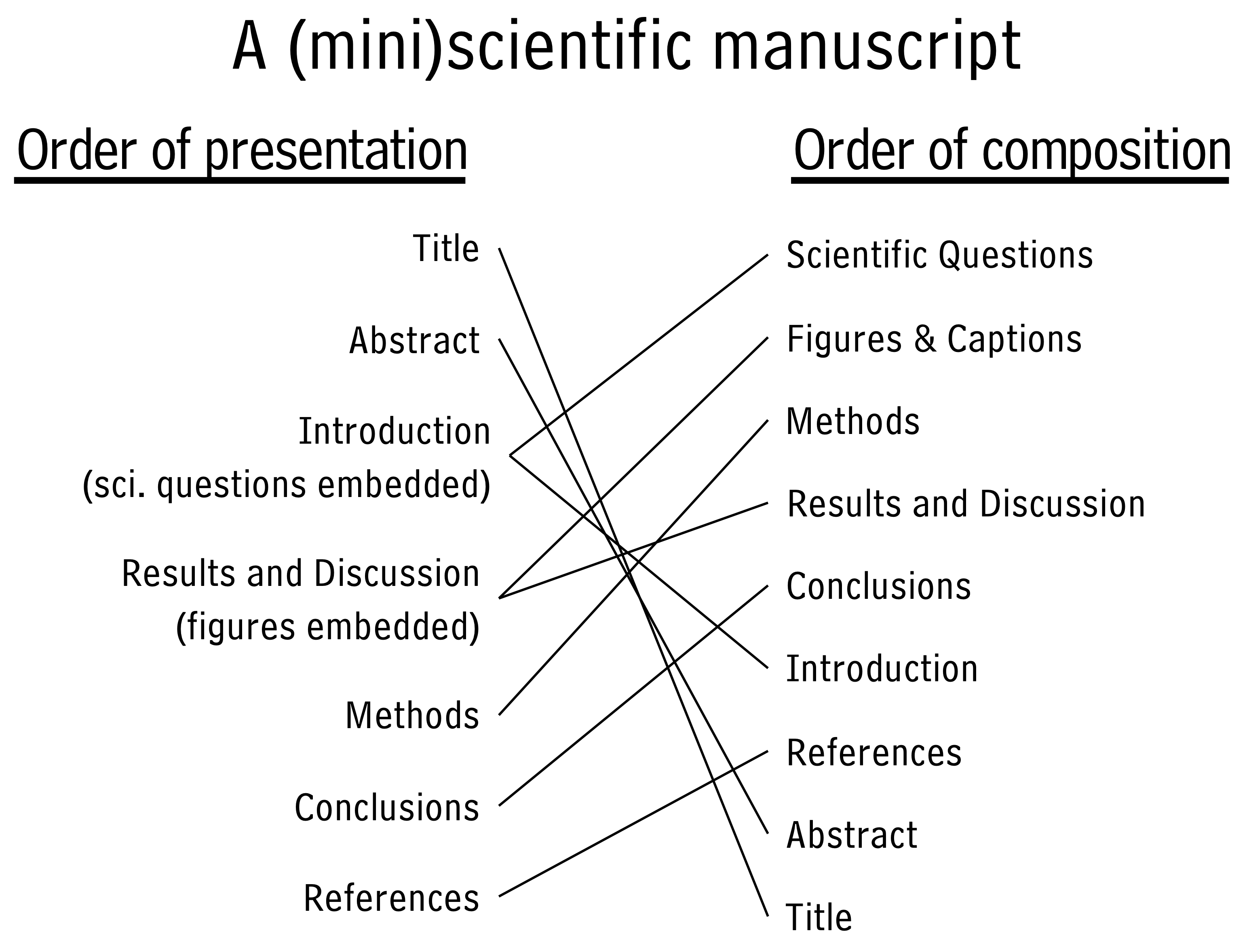overview
For your final project in this course you will use the techniques we have learned in class to analyze a large dataset, prepare high quality figures, and write a miniature manuscript describing the results:

- Find a data set: Large! >10ish variables, >5ish categories
- Sources: your research supervisor, CHEM5725 database spreadsheet, Google searches, Kaggle.com!
- Relevant to your research or interests (ideally).
- Requires approval from Dr. Busta.
- Ask at least three scientific questions.
- These should drive your data analyses.
- Requires approval from Dr. Busta.
- Analyze your data using what you learned in class.
- Refer to our book.
- Ask Dr. Busta for assistance.
- Create a written overview of your analysis. A mini-manuscript in R Markdown:
- Content similar to the articles we looked at in class, though shorter.
- Layout similar to this example (pdf, rmd).
scope
When conducting a project of this type, it is very common for there to be mismatches in the scope of how the project was conducted and how the written report is presented (see image below). We often spend LOTS of time exploring our data and running into dead ends, conclusions that are mundane, or questions we can’t answer. When we write a report on the project, we often focus the report of a specific discovery we made during our vast avenues of exploration, rather than boring the reader with all the mundane details.

order and content
The manuscript will be comprised of a title, abstract, introduction, results and discussion section, figures and captions, conclusions section, and at least five references. Please note the following when preparing your manuscript: the orders of presentation and preparation do not have to be the same (see the images below)! While in some instances a scientist may choose to write the components of a manuscript in the same order in which they appear on the page, this is not always the case. The order of preparation suggsted above is designed to minimize the amount of revision / re-writing that needs to be performed during the manuscript preparation process. Note that the suggested order of composition is in line with the class schedule for the rest of the semester.

Here is a guide for documenting analysis in a format that is polished and comprehensible. Note that each section is written for a specific and slightly unique audience. Utilizing R Markdown, the document created will convey findings and narrate the research process. In crafting your R Markdown document, ensure that code remains concealed in the final presentation by including echo = FALSE within chunk headers. This action hides the R code blocks in the output, yet permits their execution for generating figures and results.
TITLE: Craft a title that’s both clear and descriptive. It should be accessible to specialists in the field as well as the wider scientific audience, avoiding overly technical language that might limit its broader appeal.
ABSTRACT: Summarize the study in the abstract, providing detail that will be informative to experts and also comprehensible to those outside the field. It should briefly outline the study’s aims, methods, key results, and conclusions, offering a snapshot of the entire project.
INTRODUCTION: In the introduction, present the context and significance of the research in a way that’s understandable to researchers and those not as versed in the subject. Clearly enumerate the multiple research questions that the you aim to answer, highlighting the research’s relevance and framing the inquiry.
METHODS: Describe where the dataset was sourced, any data processing steps taken, and provide a detailed description of the analysis procedures utilized in RStudio. This section should be detailed enough to allow for replication and validation, yet clearly written to be accessible to non-experts. The explanation of the methods should help readers understand how the research questions were addressed.
RESULTS AND DISCUSSION WITH FIGURES AND CAPTIONS: Integrate your findings with clear, illustrative figures and captions within this section, ensuring they can be understood independently of the text for visual learners. The written portion should concisely interpret the results in light of the research questions, discussing the significance of the findings in a way that appeals to both those interested in the analytical nuances and those seeking to understand the overall implications.
CONCLUSION: Summarize the primary insights and their relevance, keeping this section succinct and to the point. It should crystallize the main findings and their contribution to the field, suited for readers who seek a quick synopsis without delving into the full text.
REFERENCES: Include at least five references to substantiate your research, ensuring they are pertinent and formatted to facilitate easy follow-up for interested readers. The references should be organized to serve both as a trail for fellow researchers and a resource for those who are less experienced in the academic discourse.
scientific questions
Scientific questions are pivotal in plant chemistry research, especially when examining the quantification of compounds in various plants, tissues, or environments. They orient the scope of inquiry and dictate the choice of analytical methods to draw pertinent conclusions from data.
DESCRIPTIVE questions might catalog the variety or concentration of phytochemicals present in a given species, often employing summary statistics to encapsulate the data:
What is the average concentration of alkaloids found in the leaves of nightshade plants in temperate zones?
How do the levels of flavonoids vary among different tissues of the grapevine?
What is the frequency distribution of terpene profiles in pine populations across different altitudes?
CORRELATIVE questions investigate the relationships between environmental factors and chemical expression in plants, typically utilizing regression modeling:
Does the level of UV radiation correlate with the production of protective anthocyanins in vineyard grape varieties?
How is the accumulation of heavy metals in fern tissues related to soil pollution levels?
COMPARATIVE questions explore variations or consistencies across groups or conditions, often answered through statistical comparisons or pattern recognition methods like clustering:
Which are more similar in their secondary metabolite profiles, medicinal herbs grown in greenhouse conditions or in the wild?
What distinguishes the phenolic compound content in shade-grown coffee plants versus those grown in direct sunlight?
Is there a significant difference in essential oil compositions between lavender plants cultivated in different soil types?